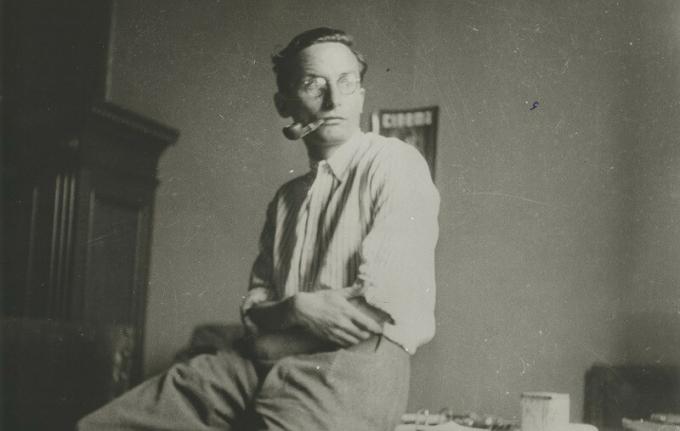Rudolf Arnheim: biography of this German psychologist and philosopher
Rudolf Arnheim was a German psychologist and philosopher who, influenced by Gestalt psychology and added to his interest in The artistic focused his career on the understanding of visual perception and thought, in addition to various phenomena aesthetic.
He was a prolific author who, added to living for over a century, allowed him to write many articles and books focused on both in art and in the influence of the great media of his time, including cinema, radio and television. TV.
Next we will see the life of this researcher through a biography of Rudolf Arnheim, we will know his main works and we will also address his philosophical-artistic thought.
- Related article: "History of Psychology: main authors and theories"
Short biography of Rudolf Arnheim
Rudolf Arnheim's life is long, something that if we take into account that he was a great writer results in a very extensive work, both in the form of books and articles and research. The first years of him were murky since he witnessed the outbreak of the two world wars
, having to flee from his native Germany in the 1930s due to his status as a descendant of Jews and a critic, albeit in the form of artistic criticism, with Nazi pretensions.In his flight he visited several countries, reaching the promising United States of the mid-twentieth century, a country of peace and of great intellectuality that convinced him to spend the rest of his life in North American territory. There he would have the opportunity to receive several scholarships for more than excellent work from him, and he also served as a professor at several universities, including the prestigious Harvard. In addition to this, he would continue to investigate art and aesthetics, relating it to Gestalt psychology, visual perception being the distinctive theme of his works.
Early years
Rudolf Arnheim was born on July 15, 1904 in Berlin, Germany, in the bosom of a Jewish family residing in the famous Alexanderplatz, although shortly after his birth they would move to Charlottenburg.
Little Rudolf already showed interest from a young age towards the artistic, entertaining himself in his spare time drawing. He also showed an interest in psychology, buying himself books on Sigmund Freud with only 15 years, thus beginning his interests towards psychoanalysis.
Although Arnheim showed clear pretensions towards academic life, Georg Arnheim, his father, intended to make him work in the family business, his piano factory. Thus, Mr. Arnheim's idea was for his son, once he was old enough, to take charge of the workshop, thus having a permanent and stable job.
But the young Rudolf already showed signs that this did not go much with him, which made his father end up accepting the idea that, when it will be time to study, Arnheim will go half the week to the university and the other will focus on working in the business family.
But, fortunately for Rudolf, his father ended up accepting the idea that the young man was much better studying all week. The reason for this was that the Arnheim was beginning to distract the other workers in the shop by explaining his knowledge of the mechanics behind the piano instead of assembling them.
Studying at the University
When the time came, Rudolf Arnheim enrolled at the University of Berlin where he wanted to study psychology. At that time psychology was still a young discipline and it was still framed within philosophy as one branch, which is why Arnheim enrolled in philosophy, but he studied both experimental psychology and other branches. theoretical.
The University of Berlin was a place of much culture and science before the outbreak of the Second World War. As the nerve center of the German intelligentsia, many were the great characters of his time with whom Arnheim had the opportunity to network, including Albert Einstein, Max Wertheimer, Kurt Koffka, Kurt Lewin, Max Planck and Wolfgang Köhler. Of all these figures, that of Köhler and Wertheimer are the most remarkable, since they worked in the department of psychology of the faculty and as followers of the Gestalt they influenced enormously in Arnheim, who would also end up following his postulates and applying them in his academic career.
Wertheimer himself proposed to his pupil Arnheim to do the dissertation on how human facial expressions and writing could correspond. Thus, Rudolf Arnheim studied how people perceive an expression while looking at a face and what they perceive when they see a handwritten text. In 1928 he received his doctorate from the Humboldt Universität with his work "Psychological-experimental investigations on the problem of expression".
- You may be interested in: "Max Wertheimer: biography of one of the founders of Gestalt theory"
Gray years
After finishing his studies, Rudolf Arnheim begins a time of happy beginning but sad ending. It is around this time that he begins to write reviews about the cinematexts which put him in contact with Siegfried Jacobsohn, the chief editor of "Die Weltbühne", who accepted them for publication.
This magazine was very important in the German cultural scene and it talked about politics, art and economics. Shortly after Jacobsohn died, being succeeded by Carl von Ossietzky who accepted Arnheim to work in the cultural section of the magazine until 1933.
In the autumn of 1932 Arnheim published an essay in the "Berliner Tageblatt" in which he discussed the nature of Charlie Chaplin and Adolf's whiskers. Hitler, explaining how his peculiar style completely modified the perceived appearance of the nose and the character associated with those who used it. wore. Ironically, this essay would end up being censored three months later with the Nazis coming to power.
After this incident, both Arnheim and several of his friends saw that gray years were approaching for Germany, which began with the first censures. and book persecutions by Nazism. In fact, in 1933 the sale of his book "Film als Kunst" (Cinema as Art) was prohibited, something that made him decide to leave his country in August of that same year.
The first destination of his exile was Rome, a city in which he would write about cinema and radio, staying there for six months. Sadly, with the outbreak of World War II and Italy's affiliation with the Third Reich, Arnheim decided to flee to London where he would work as a war translator at the BBC.
In 1940 he decided to jump into the pond, going to the United States. Arnheim was captivated by stepping on North American soil, especially when visiting cosmopolitan New York, a city full of magical lights and where the intellectuals of the time, both Americans and fled Europe, met in a whirlwind of ideas innovative.

Academic life and last years
Still with the Second World War in progress, in 1943 Rudolf Arnheim He obtained the position of Professor of Psychology at Sarah Lawrence College and would also serve as Visiting Professor at the New School for Social Research. It is at this same time that he received a grant from the Rockefeller Foundation, allowing him to have a small livelihood in a truly uncertain time for every German exile.
A little later I would have the opportunity to work at Columbia University, specifically in its Office of Radio Research, in which he devoted himself to analyzing how American telenovelas or "soap-operas" influenced the American audience in the decade of the 1940.
In 1951 Arnheim again won a Rockefeller scholarship, which allowed him to withdraw from the world of university teaching for a time to dedicate himself to the writing of his book "Art and Visual Perception: A Psychology of the Creative Eye" ("Art and Visual Perception: A Psychology of the Eye Creative").
After living in the United States for years and his academic life already prolific, he chose to make that country his place of residence. His success in the North American university environment was staged by the fact that in 1968 he was invited by Harvard University to work as a professor of art psychology, a place where he would teach for six years.
At the end of his period at Harvard in 1974, he decided to reside permanently in Ann Arbor, Michigan, with his wife, Mary, and left see on more than one occasion as a visiting professor at the University of Michigan, where he would teach for the ten years following. It is in this same period, specifically in 1976, that he was elected as a member of the American Academy of Arts and Sciences.
Arnheim he was part of the American Aesthetic Society and became its president twice, as well as being the president of the Division of Psychology and the Arts in the American Psychological Association three times. In addition to these honors, in 1999 he received the Helmut-Käutner Award, one of his last merits before he died in Ann Arbor, Michigan, on June 9, 2007, at the age of 102.
Artistic-philosophical thought
Describing in a few paragraphs what Rudolf Arnheim's thinking is like is certainly complicated. Although he was a psychologist, there is no doubt that As a follower of the Gestalt school and a student of art, we can refer to his thought as something that combines the artistic with the philosophical., even in his reflections about the media that, as mass communication tools, greatly influence the thought and artistic currents of society.
Arnheim considered that the senses allow us to understand external reality. These should not be seen as mere mechanical instruments, as something by which we simply capture information, but rather, Active instances of perception function as bridges of visual thought, even without the stimulus necessarily being visual. The mind adds information to sensory perceptions and thus knowledge is elaborated.
Throughout his life he studied multiple expressions of art, including those from the cinema, radio and television. television that, although they clashed with the idea of traditional art, he was very clear that they were indeed representations artistic. For Arnheim, and very much in line with many movements of his time as the avant-garde movements, art is not obliged to reproduce faithfully reality, but can artificially explore and recreate other solutions, which can even supplant the own perception of the reality.
This idea that art does not have to reflect reality in itself was made from his analysis of cinema. When we watch a movie it gives us the sensation of seeing movement, but in reality what we are seeing are rapid flows of images that generate the perception of action. We confuse seeing for thinking, the static for the dynamic, the still for the mobile.
But in addition to the purely perceptual confusion, he also explored how the mainstream media can handle public opinion. Arnheim saw the birth and popularity of television, a mass media that was already showing as a double-edged sword at the beginning of its irruption in North American society in the middle of the century XX. Television could be a great element of communication, enriching the culture of the moment, but it could also entertain, manipulate, and divert public opinion from issues that do not appear in the screen.


